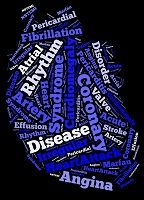Article
Losartan Trial for Marfan Syndrome Has Negative Results
Author(s):
Cardiologists treating pediatric patients with Marfan syndrome were hopeful that positive results from animal studies using losartan would be replicated in humans. But in a comparison of losartan with atenolol, researchers found no difference in the drugs' performance.

Cardiologists treating pediatric patients with Marfan syndrome were hopeful that positive results from animal studies using losartan would be replicated in humans.
But in a comparison of losartan with atenolol, in these patients, researchers found no difference in the drugs’ performance.
“This was a negative trial,” said Ronald Lacro, MD, associate in cardiology, Boston Children’s Hospital, assistant professor of pediatrics, Harvard Medical School, Boston, MA., presenting the study at the 2014 American Heart Association Scientific Sessions in Chicago, IL.
About 1 person in 5,000 is born with Marfan syndrome, due to a genetic defect.
In patients with Marfan syndrome, the aorta gradually enlarges and can tear or rupture, often fatally. The goal of drug therapy is to slow that growth process so the aorta remains intact.
Losartan is an angiotensin receptor blocker. Atenolol is a beta-blocker.
For the study, a group of 608 patients, ages 6 months to 25 years, were randomized to either losartan or atenolol. In both groups, aortic growth was slowed, but there was no significant difference in results with the two drugs, Lacro said. Both were most effective in the youngest patients, those 6 months to 1 year old.
3 years.
There were no serious side effects; both drugs were well-tolerated.
Patients were followed for up to
Commenting on the study, John A Elefteriades, MD, a cardiac surgeon at Yale University, said “In all respects this was a negative trial; lorsartan did not live up to early animal testing.”
The only possible confounding element in the study was that the patients included did not have genetic testing to confirm that they had true Marfan’s, he said.
“The results are also discouraging regarding the use of losartan in non-Marfan’s aneurysms,” he said.
“The positive is that both these drugs work,” said Lacro.





